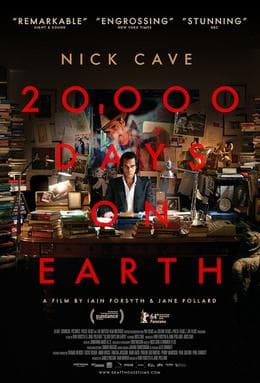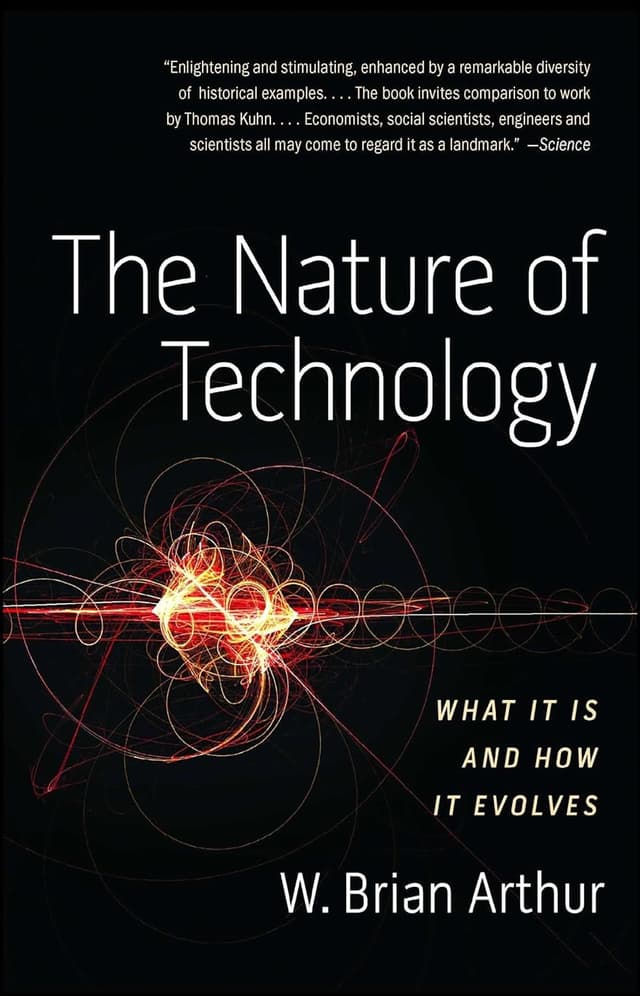Noah Brier | November 17, 2020
Why is this interesting? - The Progress Edition
On technology, innovation, and becoming smaller and cheaper
Recommended Products

A recommended watch for those interested in Nick Cave, as suggested in the shoutout of the day.

A book by W. Brian Arthur that outlines the evolutionary journey of technology, proposing that new technologies arise not through simple accumulation or random combination, but through an ordered process using existing technologies as components.
Noah here. When the iPhone X with FaceID first came out, many pointed out that Apple had basically shrunk down a Microsoft Kinect, a device built to play Xbox games with your body, down to a one-inch slot at the top of the screen. The Kinect had come out eight years prior and represented a big push forward in motion detection. “In its day,” Paul Miller explained for The Verge, “the Kinect was the fastest-selling consumer electronics device of all time, while it was also widely regarded as a flop for gaming. But the revolutionary depth-sensing tech ended up being a huge boost for robotics and machine vision.” With Apple’s announcement all that was just a small feature (physically, not promotionally) on another huge-selling device.
Last month, Apple announced another new iPhone. By now you may have one in your pocket, and while it’s been touted for its new form factor and camera, one of the big additions to this model is the introduction of lidar, which takes some of the ideas introduced in the iPhone X and expands on them. Here’s the quick explanation from Ars Technica:
Lidar works by sending out laser light and measuring how long it takes to bounce back. Because light travels at a constant speed, the round-trip time can be translated into a precise distance estimate. Repeat this process across a two-dimensional grid and the result is a three-dimensional "point cloud" showing the location of objects around a room, street, or other location.
If you’ve heard of lidar it’s most likely in the context of autonomous vehicles, many of which use the technology to “see” the road (The Autonomous Edition has more details). As with the iPhone X’s notch, Apple took bulky and expensive technology—a decade earlier a similar lidar setup would run $75,000 according to Ars—and put it in a smaller and less expensive package.
Why is this interesting?
Both of these are perfect examples of what economist and complexity theorist W. Brian Arthur outlines as the evolutionary journey of technology. In his book The Nature of Technology he describes his theory, which comes out of a recognition that engineering doesn’t work like evolution:
The central question Darwin needed to answer for his theory of biological evolution was how novel species arise. The equivalent question for our theory is how radically novel technologies arise. Darwin’s solution, as I have said, does not work for technology. The jet engine does not arise from the cumulation of small changes of previous engines favored by natural selection. Nor does it arise by simple combination, throwing existing pieces together in some jumbled fashion mentally or physically. “Add successively as many mail coaches as you please,” said Schumpeter, “you will never get a railway thereby.” That does not rule out combination, but it means it must take place in some more ordered way than pure randomness.
In the end, the process Arthur identifies feels obvious, but insightful:
Early technologies form using existing primitive technologies as components. These new technologies in time become possible components—building blocks—for the construction of further new technologies. Some of these in turn go on to become possible building blocks for the creation of yet newer technologies. In this way, slowly over time, many technologies form from an initial few, and more complex ones form using simpler ones as components. The overall collection of technologies bootstraps itself upward from the few to the many and from the simple to the complex. We can say that technology creates itself out of itself.
Put (slightly) more simply: new technology is invented, and, if successful, replaces other processes or technologies, this opens up new opportunities and needs for it to solve, which further drives its production and miniaturization as well as driving down its price. In the end, the new technology is eventually small and cheap enough to become a component in a more complex piece of technology.
Two takeaways from this: First, Apple is carrying on a long line of evolving technology and building on the back of what came before. Second, to think about what’s next involves, at least in part, looking at what’s here and imagining it way smaller and cheaper. (NRB)
___
Partner Post: WITI x Brightland
As we near the holiday season, may we suggest gifting Brightland? Regular WITI readers will know we have been fans since launch. The brand was founded by Aishwarya Iyer (see our MMD with her here) with a distinctive aesthetic and strong vision to show people the benefits of real, quality olive oil. The brand has rolled out a range of new products, each designed to be front and center in your kitchen and with your cooking. The Essential Capsule is a perfect introduction and a perfect gift. It features Brightland’s core products, the now-classic AWAKE and ALIVE olive oils, as well as PARASOL, a raw champagne vinegar, and RAPTURE, a raw balsamic vinegar, double fermented with California zinfandel. In addition to gifting for your family and loved ones, you can also grab a subscription for yourself. Just like last time, they are kindly offering WITI readers 10% off of the Essential Capsule, with the code WITIESSENTIAL.
___
Shoutout of the day:
A warm shout of the day for Bobbie Beal, grandmother of our friend and WITI contributor Eric Matthies. She was circulating a Nick Cave link around the family (that Noah had added a few editions ago) and Eric was curious how she had found it, as generally grandmothers and Nick Cave are two things you don’t readily associate. Turns out her loyal WITI readership was the culprit. Mrs. Beal, we are honored to have you as a reader. Check out the Red Hand Files, which is a treasure trove of Nick’s writing and if you are further interested in one of my favorite artists of all time, watch 20,000 days on Earth. (CJN)
Quick Links:
About Hawaii’s re-opening to tourism (CJN)
Taylor Swift on the sale of her masters (CJN)
A Japanese “monster wolf” to scare off bears (CJN)
Thanks for reading,
Noah (NRB) & Colin (CJN)
—
Why is this interesting? is a daily email from Noah Brier & Colin Nagy (and friends!) about interesting things. If you’ve enjoyed this edition, please consider forwarding it to a friend. If you’re reading it for the first time, consider subscribing (it’s free!).


